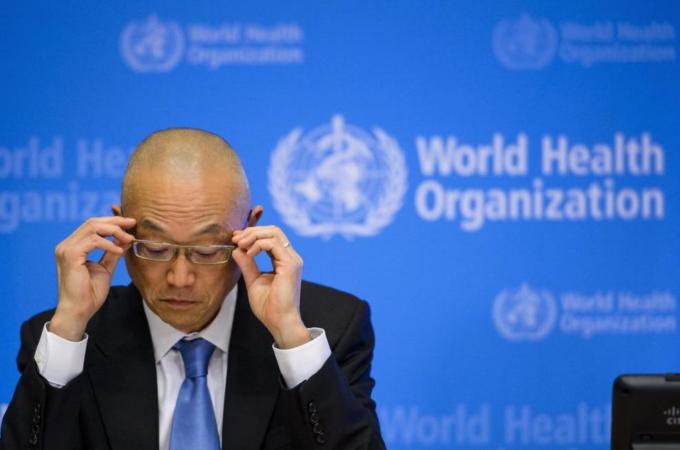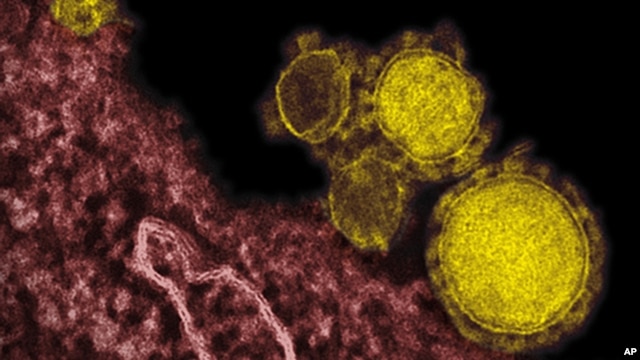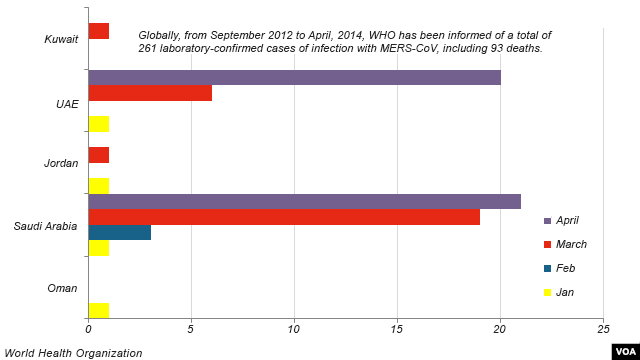Ionizing and Non-Ionizing RadiationThere
are two types of radiation: ionizing and non-ionizing. Both types cause
DNA damage and form harmful free radicals. Ionizing radiation is
produced from nuclear reactors, nuclear bombs, nuclear waste, and
diagnostic equipment like x-rays and
CT scans.
Ionizing radiation is considered the most harmful. The most common
diseases linked to ionizing radiation include thyroid disease, leukemia
and various cancers, anemia, bone and blood disorders, endocrine
(hormonal) disruption, reproductive abnormalities and birth defects,
kidney and liver damage, and overall severely damaged immune
systems.Non-ionizing radiation is a type of electromagnetic radiation
produced by electronic devices such as televisions, cell phones and
towers, wireless devices, computers, high voltage electrical lines,
radios, microwaves, etc. Non-ionizing radiation disrupts molecules as it
passes through the body, and there is an increasing body of research
demonstrating that exposure to
electromagnetic frequencies
(EMFs) can alter the behaviour of cells and hormones. For example, EMFs
can cause the body to reduce production of the hormone melatonin,
affecting immune processes and causing increased defects, sterility, and
fetus mortality rates in laboratory animals. In 1987, scientists
discovered a significant link between increased incidence of childhood
cancer and close proximity to high tension power lines and commonly used
electronic devices.
Radiation-induced Thyroid DiseaseA
variety of dangerous radioactive materials are known to be released
during nuclear power plant accidents. Among the most worrisome are
cesium-137 and iodine-131, which emit Gamma rays and have affinities for
parts of the human body. Cesium-137 mimics potassium inside the body
and accumulates mainly in the liver, kidneys, and the reproductive
system. Iodine-131 is rapidly absorbed by the thyroid gland and
increases the risk of thyroid growths and cancer.
And radioactive
emissions are not limited only to nuclear accidents. According to
Professor Ernest Sternglass of the University of Pittsburgh School of
Medicine, an expert on radiation physics: “By design, nuclear power
reactors must regularly release steam to lower the intense heat
produced. Invisible radioactive particles are emitted into the
atmosphere along with the steam and are carried on air currents,
eventually falling to the ground with rain and snow... Many cancer hot
spots are related to nuclear fallout carried by wind currents from
distant locations, which later come down with rain or snow over a
particular area, raising the cancer risk among a local population that
received the precipitated radioactive fallout.”
The thyroid gland
is the first to uptake radioactive iodine, and even when small amounts
are inhaled or ingested they will concentrate in the thyroid gland. Most
North Americans are iodine deficient which makes them more vulnerable
to radioactive iodine. If there is an iodine deficiency in the diet,
radioactive iodine-131 will be absorbed and accumulate in the thyroid
gland because the thyroid does not distinguish between radioactive and
non-radioactive iodine. Having adequate iodine in the body therefore
prevents radioactive iodine from attaching to the thyroid gland.
Potassium
iodide pills can be taken to prevent the uptake of radioactive iodine
in the event of a nuclear accident. Supplementing with potassium Iodine
(KI) in either pill form or saturated liquid form (super saturated
potassium iodide or SSKI), is the best way to quickly load iodine into
the thyroid. Potassium iodine (KI) can be administered in prophylactic
doses within 24 hours of exposure in radiation emergencies, and for a
short period of time after exposure. In 1986 after the Chernobyl
accident, people who were administered potassium iodide experienced less
childhood thyroid cancers compared to those who were not. The World
Health Organization also recommends potassium iodide supplementation to
prevent the thyroid’s uptake of radioactive iodine.
Consuming
natural sources of iodine helps offset the side effects of radiation
exposure. The best natural source of iodine comes from seaweeds (also
referred to as sea vegetables), however there is renewed controversy
surrounding seaweed that may be harvested from polluted ocean waters.
Kelp is perhaps the most well-known seaweed; others include wakame,
kombu, dulse, nori, hijiki, and arame.
In North American studies,
seaweed was found to neutralize radioactive isotopes in the human body.
Researchers discovered that certain radioactive materials can bind to
the algin in brown seaweeds to create “sodium alginate” which has a
unique quality in that it can bind heavy metals and radioactive
elements, preventing their absorption by the body. In one Canadian
study, sodium alginate from kelp reduced radioactive strontium
absorption in the intestines by 50 percent to 80 percent.
Other Nutritional and Antioxidant Treatments for Combating RadiationA
large number of nutrients and foods are suggested as being helpful in
preventing or limiting, or even counteracting, the effects of nuclear
radiation. Below are some that are especially noted for their beneficial
effects:
MISO -- this fermented food made from
soybeans has long been used in Japan for both protection from radiation,
detoxification, and for stimulating the immune system. Miso is also
well-documented to benefit circulation and remove blood clots. Miso soup
was used as the primary antidote for the effects of radiation poisoning
after the Hiroshima bombing. A 1990 Hiroshima University study
concluded that people who regularly consume miso soup may be up to five
times more resistant to radiation poisoning than people who do not.
SPIRULINA
-- is a blue-green algae that is extremely rich in nutrients. It
contains beta carotene, vitamin B-12, iron, chlorophyll, GLA fatty
acids, and much more. Spirulina has been studied extensively in Russia
and China, where research has shown it chelates radiation from the body,
as well as provides general protection from radiation toxicity. One
study in particular demonstrated how children on a protocol of spirulina
after Chernobyl had improved immunity and T-cell counts. Chlorella
algae is often listed along with spirulina as an equivalent radiation
chelator. However, although chlorella is well-regarded as an excellent
heavy metal detoxifier and is also known to reduce chemotherapy
side-effects, it has not been demonstrated in research to counter the
effects of nuclear radiation.
R-LIPOIC ACID -- is
a unique, vitamin-like antioxidant that protects the body from free
radical damage. Research performed in Russia found that lipoic acid is
one of the most effective anti-radiation nutrients available. Research
continues to demonstrate that it has many benefits as a super
antioxidant and metal chelator, working to repair liver damage, combat
radiation sickness, treat diabetes, and protect against free radical
damage.
Glutathione (GSH) and N-acetyl-cysteine (NAC)
-- Glutathione is an internally produced antioxidant that enhances the
ability of immune system cells and protects against radiation damage.
Studies have also shown that GSH can reduce side effects of
chemotherapy, xrays, and alcohol. In addition, it is well-known as a
detoxifier of heavy metals, and is extremely useful in the treatment of
blood and liver disorders. Supplementing with N-acetyl-cysteine (NAC), a
glutathione precursor, stimulates glutathione synthesis. NAC itself is a
powerful antioxidant that is effective in detoxifying the liver.
Sulphur-containing foods such as cabbage, broccoli, and kale also help
the body to produce GSH.
SELENIUM -- is a
cofactor of glutathione production and activates the antioxidant enzyme
glutathione peroxidase, which is believed to protect the body from
cancer in large part by increasing white blood cell counts. The largest
study performed with selenium demonstrated that people supplementing
with selenium developed less prostate, colorectal, and lung cancers.
While there are no human studies to support the theory that selenium
directly protects against radiation, research performed on rats has
demonstrated that selenium decreased death rates in rats who were
directly exposed to radiation.
GREEN AND BLACK TEAS
-- Studies have shown that both green and black teas provide some
degree of protection against radiation. Tea catechins seem to absorb and
eliminate radioactive isotopes. The polyphenol epigallocatechin gallate
(EGCG) derived from green tea has been shown in animal studies to
protect from whole-body radiation. Regular black tea exhibited the same
anti-radiation effects in several Japanese studies.
BENTONITE CLAY --
Has also been recommended for detoxing after radiation exposure, but
this is not confirmed by research. Bentonite clay is well-documented in
traditional medicine to bind heavy metal toxins and effectively flush
them from the body.
Botanical Medicines as Potential Radiation ProtectorsOngoing
research on several plants and herbs is demonstrating their potential
radioprotective abilities. The natural chemicals, referred to as
polyphenols, that are present in various botanicals have been shown to
counteract the oxidative stress that is induced by ionizing radiation.
They tend to do this either by scavenging radiation-induced free
radicals and/or by elevating antioxidant levels in the body.
Many
of the botanicals currently being researched have medicinal properties
and have been safely used in traditional Chinese and Ayurvedic systems
of medicine. These include various plants such as: Podophyllum
hexandrum, tinospora cordifolia, phyllanthus amarus, piper longum
(pippali) fruit, arctium lappa (burdock root), and zingiber officinale
(ginger). The most notable research, however, has been performed on
panax ginseng and gingko biloba.
PANAX GINSENG --
Studies have successfully demonstrated that treatment with panax
ginseng extract aided recovery of cells involved in blood clotting
(thrombocytes) and red blood cell counts in blood after radiation
exposure. Clinical trials reported that people who took panax ginseng
extract for thirty days following exposure to radiation showed a faster
recovery rate from injuries to their bone marrow, organs, skin, and
blood cells. In animal studies, ginseng extract prevents bone marrow
injury and accelerates the recovery of both red and white blood cell
counts.
GINGKO BILOBA -- Solid research has been
performed on extracts of ginkgo biloba, which contain antioxidant
compounds that protect cells from free radical damage. Specifically, the
results suggest that the gingko biloba extracts prevent cells from
undergoing apoptosis (programmed cell death). A study was performed on
healthy white blood cells that were then exposed to gamma radiation.
Half of the sample was treated with the ginkgo biloba extract and these
cells showed protection from the radiation while the untreated cells
underwent apoptosis. The study concluded that the extracts of the leaves
of the gingko biloba tree may protect human cells from radiation
damage.
PECTIN -- Ongoing studies are researching
pectin as a natural chelating agent. Pectin is a structural
polysaccharide (fiber) found in cell walls of plants and fruits. Some
studies have demonstrated it to be beneficial for binding and removing
radioactive residues from the body. Pectin-rich foods include apples,
guavas, plums, gooseberries, and citrus fruits.
Caveat, re: Iodine
-- While Dr. Joseph Mercola recognizes that optimal amounts of dietary
iodine are important to nourish the thyroid, he warns about the risk of
getting too much iodine: “Taking too much iodine may lead to subclinical
hypothyroidism, which occurs when your thyroid produces too little
thyroid hormone. It’s an ironic association, since hypothyroidism is
often linked to iodine deficiency, But research published in the
American Journal of Clinical Nutrition
revealed that study participants taking relatively higher doses of
supplemental iodine -- 400 micrograms a day and more -- paradoxically
began developing subclinical hypothyroidism.”
Dr. Mercola also
points to a major culprit in the epidemic of iodine deficiency in North
Americans today:bromine exposure. “When you ingest or absorb bromine
(found in baked goods, plastics, soft drinks, medications, pesticides
and more), it displaces iodine, and this iodine deficiency leads to an
increased risk for cancer of the breast, thyroid gland, ovary and
prostate -- cancers that we see at alarmingly high rates today.”
Food IS MedicineBuckwheat
is an important food to include, according to researchers. Buckwheat is
high in the bioflavonoid rutin, and research supports its protective
effects against radiation, and stimulating new bone marrow production.
Also important to include in the diet are dried beans, especially
lentils, which have been shown to reverse DNA damage caused by
radiation. Incorporating medicinal mushrooms such as reishi and chaga
mushrooms into the diet can also protect from radiation-induced, cancers
according to research.
Much of the damage caused by radiation can
be attributed to a high level of acidity and the inflammation that
results in several diseases. Consuming alkalizing foods can have a
multitude of benefits, and is protective against radiation-induced
illnesses. Alkalinizing foods include whole grains, fruits, leafy green
vegetables, essential fatty acids, lean proteins, etc, whereas
acidifying foods are processed foods, refined carbohydrates, and sugar.

 GRIPPE AVIAIRE 8 nouveaux foyers identifiés dans les Landes. 61 foyers désormais touchés dans le sud-ouest
GRIPPE AVIAIRE 8 nouveaux foyers identifiés dans les Landes. 61 foyers désormais touchés dans le sud-ouest














 TODAY
TODAY 

